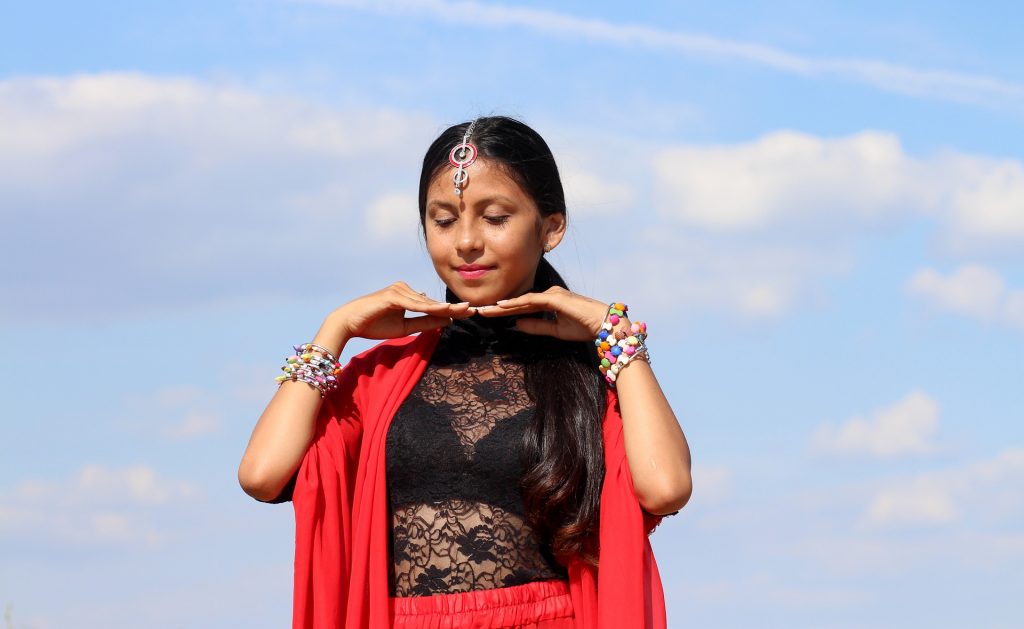
by Hadiya Iqbal
As a darker-skinned girl with more hair than considered “normal,” I often felt insecure about my appearance. Other girls sat in the sun and put on tanning lotion to achieve a “healthy glow.” I made sure to be fully covered head-to-toe, even when it was above 80 degrees outside so I wouldn’t get darker than I already was. In these times, my mom would remind me of three words that I would always forget, but knew were true: brown is beautiful.
Even with this popular phrase, brown girls are led to believe that if they are fairer and prettier, they are more likely to get married earlier, and can consider themselves more attractive than other girls who happen to be on the dark side of the skin tone spectrum. It’s not just color that I’m talking about. We feel bad about ourselves for everything in between, from hairiness to BMI.
How can these two ideas exist at the same time, yet completely contradict one another? Not only do we put ourselves down, but we put down classmates, acquaintances, best friends, and even our own family members as well.
It’s not enough that a girl has the highest grades in her class or has a good sense of style. She must have curves, while also maintaining a slim figure. She should have proportionate features. Her hair must be long, thick, and unable to frizz, and of course, she must be fair-skinned. Why exactly do we put these requirements on one another? What do my looks have to do with what anybody else thinks? Maybe I’ll attract better suitors.
[Read Related: Dark is Beautiful: An Ode to the Brown Girl]
This is not a pity party for every girl who spent hours looking in the mirror, hoping a “miracle” would occur. And this is most definitely not a “Team Light-Skin”-shaming article. This is just to show that beauty is not one simple idea. It’s confusing and complex in the way that everyone has their own idea of it. We were all meant to look, feel, and act differently. If we weren’t, everyone would be a carbon copy of each other.
So I encourage you to embrace not only your beauty but your idea of it as well.
Tall is beautiful. Short is beautiful. Fit is beautiful. Slim is beautiful. Wide is beautiful. Black is beautiful. White is beautiful. Brown is beautiful. YOU are beautiful.
The days of shaming other girls based on how light or dark they are, how much they weigh, need to end. We spend more time gossiping about how other girls should change this or that about themselves, than thinking about how we can improve ourselves, as a society, in the act of breaking the line between beautiful and not-so-beautiful and destroying these social standards we have set on ourselves.
[Read Related: #UnfairAndLovely Campaign Dares to Break Dark-Skin Stigma Around the World]
Even when some girl decides to heed our “advice” and gets her eyebrows waxed or buys a new concealer to cover up her acne, we decide that she tries too hard. Is this really what we’ve amounted to? Why is it that our community members always need someone or something to bash on, so they can put themselves on a higher pedestal?
“She’s gained so much weight. Her clothes look like they’re about to pop open. Does her family not watch what she eats?”
“She looks like she’s starving. She needs to take care of herself.”
“Sure, she’s pretty, but her sister with the fairer complexion is far prettier.”
“She put on that much foundation? Who is she getting ready for?”
These sorts of thoughts do not have to be spoken out loud to hurt. Even in our minds, the negative thoughts people hand out reflect more about themselves than the person they’re talking about. Deep inside, these girls/aunties are revealing their own insecurities rather than solving the problems of a girl they’re gossiping about.
According to our society today, if we have a great figure, an amazing complexion, and a not-too-dark-and-not-too-light skin tone, we’re perfect. We’ll have it all. But we won’t. It only adds time to our getting-ready routine in the morning. We could be using this time to improve our souls, our spirits, our faith, or other things that won’t fade away.
We attack each other because we’re scared. We’re scared of each other and, most of all scared that we might not be able to conform to the standards set high above our heads.
Even if we did have “perfect” looks, they wouldn’t last long. With time, our hair will gray, our skin will sag, and more. You were given one body and only one. Cherish it. Love it. Make it feel accepted even at your lowest times.
We weren’t meant to be Barbies.
But there’s a Barbie in each of us. Embrace her.
 A Houstonian native of Pakistani heritage, Hadiya Iqbal is a University of Houston graduate having majored in corporate communications. She now works in the marketing field and aims to go back to school for her MBA very soon.
A Houstonian native of Pakistani heritage, Hadiya Iqbal is a University of Houston graduate having majored in corporate communications. She now works in the marketing field and aims to go back to school for her MBA very soon.




